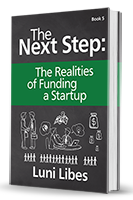Show me the (use of the) money…
Jumping back to Chapter 17, remember that investors will provide only enough funding for twelve to eighteen months, at first. In exchange for that funding, they expect you to hit some specified milestones. The list of milestones depends on the specifics of your business and its business plan. In the end, that list is up to you to produce and the investor to agree to as reasonable.
For example, a startup-stage company could promise to grow the team by three people, close ten customers and bring in $100,000 in revenues. A growth company could promise to double revenues, increase margins by five percent, and open a sales office in another city.
The other way to think and talk about this list is as the “use of funds.” It is a list of what the investors’ money will buy. From the investors’ point of view, their money is expected to be spent expanding the company, ultimately increasing the value of that company by more than the value of the cash. Thus, they want to know how that cash will be invested by the company.
From this point of view, using the previous example, such a list could be to hire three new employees, add specific features to the product, and, with that investment, bring in $100,000 in revenues. For the growth example, the use of funds would talk about the $100,000 added to marketing, which will be used to double revenues, and the new equipment and processes, which will reduce margins by five percent.
Both styles of list include the same results, but the use of funds provides more details on how those goals will be met, rather than just listing the milestones.
In both cases, the key is to provide enough detail to let the investors understand why you need the amount of capital you are requesting.
Like everything else in your pitch and business plan, the use of funds needs to be believable. The milestones need to be difficult enough that you can’t reach them without the investment capital, yet not so difficult that they are unachievable.
Meeting the milestones
Whereas your investors may not believe the third, fourth, and fifth year projections in your financial model, they are going to expect you to meet every milestone on your list. This is an important distinction.
You may believe every word in your business plan, but the reality is that you are likely to have lower revenues and higher expenses than you project. Every experienced investor knows that reality. Meanwhile, they do expect you to be able to predict twelve months into the future, to know how to manage short-term expenses and close the next few months’ sales. Thus, they expect, if you say you’ll hire N people or close N deals or earn $N this coming year, you’ll achieve those goals.
If you are going to need a second (or third) round of capital in the future, the easiest way to do that is to promise some reasonable milestones in this round and meet all of them within twelve months. Or at least meet them before you run out of money. Doing this will build trust with your investors. And, like any sales effort, making a repeat sale to an existing customer is far easier than finding and closing a new customer.
So, put a lot of thought into your use of funds. Do not overpromise!
Related readings from other Next Step books
A guide to pitching your idea
16. The Ask













